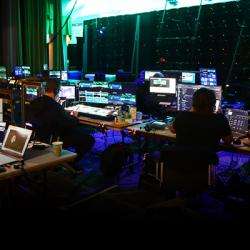From Concept to Completion: The Travel Log to a Successful AV Project

During the course of my tenure in the audio visual industry, I have interviewed a number of project managers and worked for a number of companies who claimed they “managed the entire project lifecycle from concept to completion.” In all honesty, I too have claimed to be a master of this skill. The problem with this statement is that in most cases, the only individual(s) truly involved in a project throughout its entire lifecycle is the client. Key players will join and leave the team along the way, but only the client is there from beginning through the end and beyond.
This is the first in a series of articles that will highlight what I have seen as important steps in successful AV projects. This is not intended to be an end-all, be-all project process. It will not have the detail to be such a document. It will point to several stops along the journey where a project may get off track, resulting in potential issues such as:
- Systems that will not meet user needs
- Systems that are not scalable for the future
- Budget overruns
- Schedule overruns
- Systems that are more difficult or expensive to maintain
The Concept – When does it begin?
In all likelihood, there is no AV Sales Engineer or Design Consultant in the room when an organization identifies the need to improve or add technology. That decision is made within the four walls of the organization by an individual, committee or team. However, it is possible that the decision to review the current technology was based on a presentation by a manufacturer or integrator. Are either of these moments really the development of a concept, or just the identification of the existence of a want or need?
Where the process goes from here can make all the difference in the success of a project. Taking the identified want or need and developing it into a concept can be accomplished in a number of ways.
- Organizations that have experienced and trained AV professionals on staff may be able to evaluate the wants and needs identified, and then develop them into sound AV concept.
- Some organizations will utilize the architect or designer they are using as part of a renovation to help develop their AV concept.
- AV Technology Consultants and Design Build Integrators who specialize in this process may be engaged.
The right choice will depend on the organization. It is important to note that the development of a sound AV concept requires the active participation of users, leaders, and experts. Only together can a concept be developed that will yield a successful result. Together the team can review and evaluate the value and merits of various concepts.
Balancing “Wants” v “Needs”
The Concept should be built around form rather than function. The concept should answer the question “what are we going to use this space to do?” It doesn’t need to define the equipment that will be used. Difficulties often arise when AV system users have a preconceived idea of what technology they want. Those wants can be built around experience with prior systems, technology they have seen at demonstrations or on TV, and what they have heard from others. These wants often detract from the overall need to define what business or tasks the technology will need to support. It is the responsibility of the expert, whether an internal employee or contracted professional, to mate client wants with client needs. Only when the ideal balance of both form and function has been achieved, can you have a clearly defined concept.
Continued in the next issue of IMS Connections: How to develop your concept into a design.
Share This Article
Categories
Latest Posts

Philadelphia 2026: Is Your Venue Ready for the Spotlight?

Scalable AV Infrastructure for Life Science Enterprises

Extend Your Reach: The Power of Virtual and Hybrid Events

Why Every Detail Matters in Investor and Year-End Meetings

IMS Technology Services Welcomes John Beaulieu
Tags
Contact Us
- Headquarters: 3055 MCCANN FARM DRIVE, GARNET VALLEY, PA 19060
- Event Staging: 2000 COLUMBIA AVENUE, SUITE 300, LINWOOD, PA 19061
- Southeast Office: 404 SUNPORT LANE, SUITE 350, ORLANDO, FL 32809
- Phone: + 610-361-1870
- Contact Us
Services
Recent Posts

Philadelphia 2026: Is Your Venue Ready for the Spotlight?

